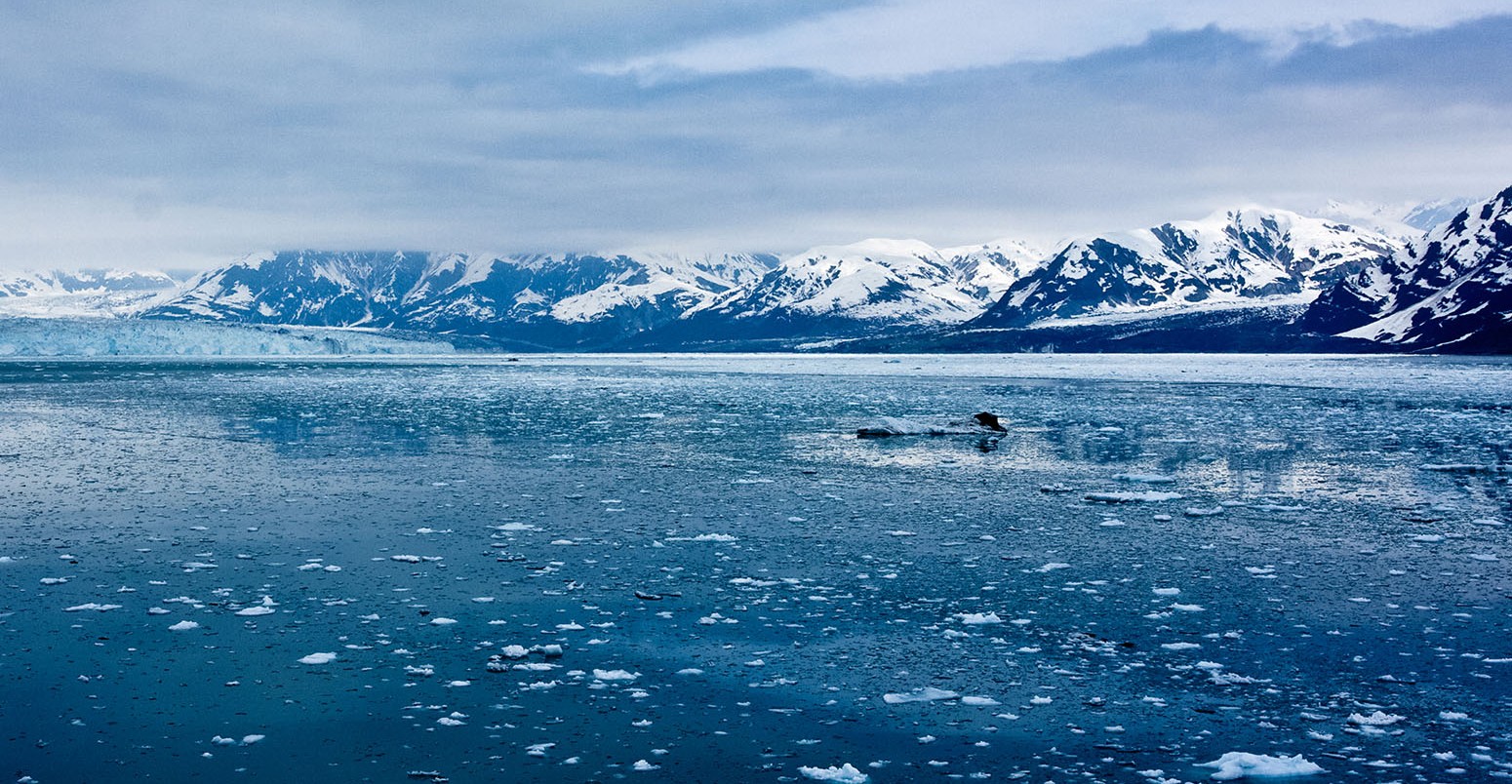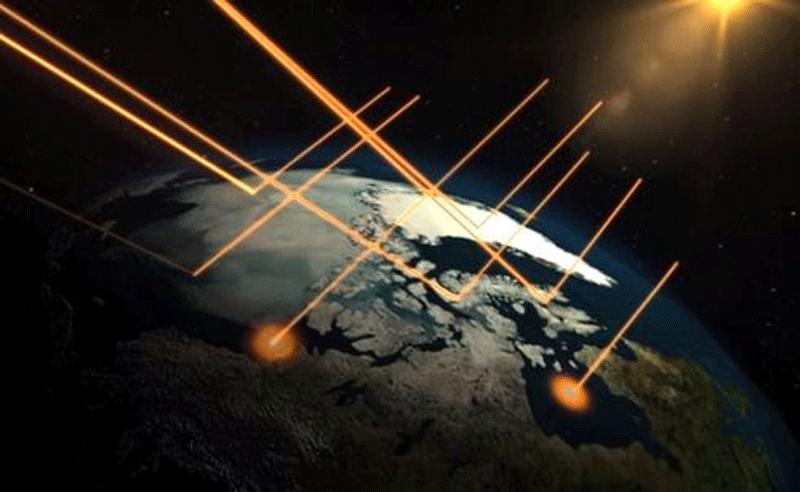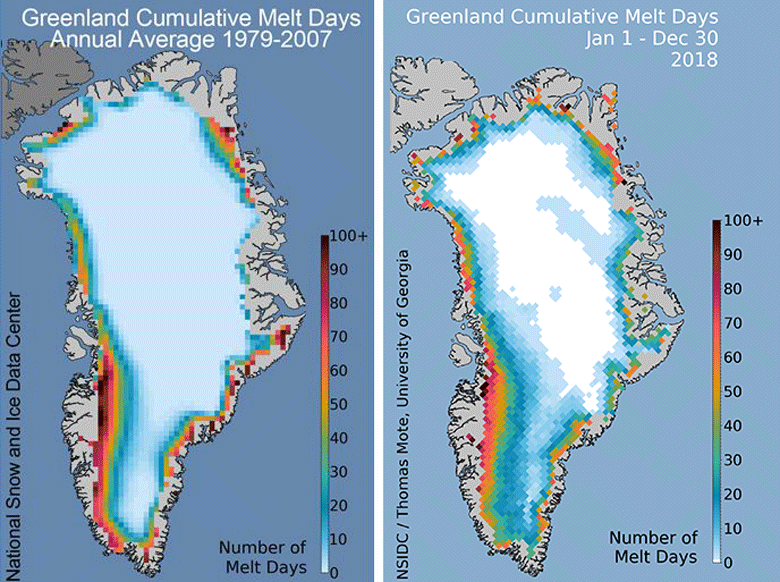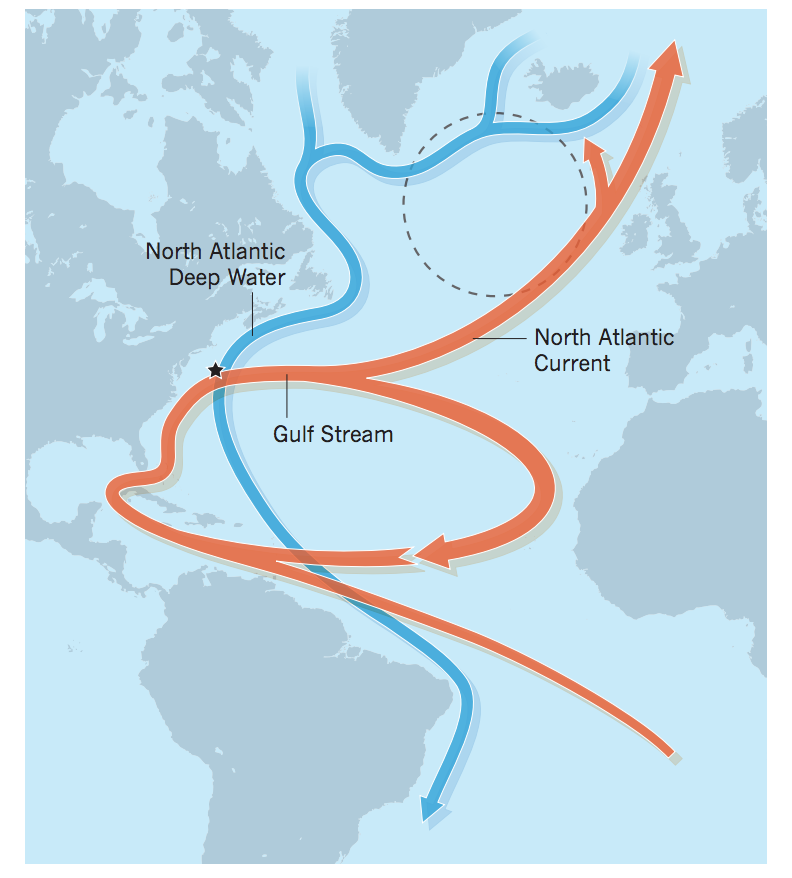
Five reasons why the speed of Arctic sea ice loss matters
Carbon Brief Staff
03.22.13Carbon Brief Staff
22.03.2013 | 3:45pmOne of the moststark indicatorsof rising global temperatures has been therapid decline of Arctic sea ice. For example, since the satellite data record began in 1978, average sea ice extent in September has decreased by around13% per decade.
The pace of ice melt has increased attention on when the Arctic might see itsfirst “ice-free” summer. (By “ice-free”, scientists usually mean a sea ice extent of less than one million square kilometres, rather than zero sea ice cover.) How quickly this arrives will depend on the success of measures to cut global greenhouse gas emissions in order to slow rising temperatures.Climate modelsimulations suggest an ice-free summer could occur somewherebetween 2032 and 2058under high or medium emissions scenarios.
But why does it matter how quickly it happens? And what are the wider implications of melting sea ice?
1. Loss of ice means more heat is absorbed
Albedo is a measure of how well a surface reflects sunlight. Snow-covered sea ice has a high albedo and reflects85%of sunlight. But the open water revealed as ice melts is darker and absorbs more – reflecting just 7%.The less sunlight the Earth’s surface reflects, the more heat the planet absorbs.

The albedo effect in the Arctic. Source:NASA
Prof Jennifer Francisfrom Rutgers University explainedrecentlythat losing reflective sea ice can, in turn, speed up surface warming – what’s known as a positive feedback. She says:
“As sea ice retreats, sunshine that would have been reflected back to space by the bright ice is instead absorbed by the ocean, which heats up, melting even more ice.”
The heat doesn’t only warm the oceans. Francis explains excess heat entering the oceans during summer is later released back into the atmosphere – raising atmospheric temperatures too. It is one important reason why the Arctic is warming faster than the rest of the planet.
2. Melting Greenland ice sheet raises sea levels
In fact, the loss of reflective sea ice is one of the main reasons why Arctic temperature has risenthree times fasterthan the global average in recent decades. This effect, known as “Arctic amplification”, has consequences for nearby land ice, too.
As land ice melts, it adds freshwater to the oceans causingsea levels to rise, and surface melt from Greenlandis increasing, as the image below shows. Satellite data suggest over the last 20 years, the Greenland ice sheet has lost140bn tonnesof ice per year.
This has raised sea levels by about 7.8 millimetres – 12% oftotal sea level risein that time. Climate models project that by 2100, Greenland’s ice sheet could contributefour to nine centimetresto sea level.Earlier estimateshad put that figure anywhere between one and 12 centimetres.

Number of melt days on the Greenland ice sheet on average (1979-2007) and last year (2018). Source:National Snow and Ice Data Centre
Warmer, sea ice free oceans could alsoincrease meltingfrom Greenland’s glaciers.Prof Andrew Shepherd来自利兹大学的告诉Carbon Brief:
“[S]mall increases in ocean temperature can quickly destabilise glaciers that flow into the oceans, and so we could expect further ice losses due to that effect too.”
The quicker sea ice loss causes Arctic temperatures to rise, thefasterthe Greenland ice sheet is likely to melt – and while it isn’t going to disappearany time soon, this contributes more to sea level rise.
3. Thawing permafrost amplifies warming
Rising Arctic temperatures arethawing发自即将衰亡的地面在北极——被称为“permafrost”. Scientists areconcernedthat CO2 and methane released from the carbon-rich permafrost could causeadditional warmingby adding to greenhouse gases already in the atmosphere – another positive feedback. Frozen methane also exists inmethane hydratesin the sea floor.
But there is a lot ofuncertaintyabout how much carbon these frozen deposits hold, and how quickly they are thawing. So far, only a small amount of methane in the atmosphere can be traced to thawing permafrost.Mostresults from human activity, like agriculture and landfill, with a smaller amount released naturally from wetlands.
At the moment, warming is mainly driven by CO2 emissions. But the sooner sea ice loss causes land and ocean to warm in the Arctic, the sooner methane from thawing permafrost could start contributing more to warming.
4. Ocean circulations could change
Another impact of Arctic and Greenland ice melt could be that the freshwater runoff into the ocean disrupts part of a major circulation system known as the Atlantic Meridional Overturning Circulation (AMOC). The AMOC carries warm surface water northward from the tropics, giving western Europe its mild climate.
Climate models predict the AMOC could slow down by an average of25%by 2100. This is mainly due to changes in temperature and precipitation patterns, butscientists sayfreshwater from melting ice could become increasingly important with climate change. Some studies suggest that the AMOC has alreadyweakened by 15%since the middle of the last century.
Models suggest a slowdown in the AMOC couldcoolthe northern hemisphere this century, but the effect is likely to beoutweighedby greenhouse gas warming. But the AMOC is just one part of a giantconveyor beltwhich currently redistributes warmth around the world, so losing ice could affect regional climates worldwide.
Changes in the strength of the AMOC can alsoaffectsea ice melt by transporting more or less warm surface water into the region. It is a complicated picture and so more research is needed to understand the full extent of the impacts.
5. Melting sea ice can influence winter weather
As temperatures rise faster in the Arctic than at lower latitudes, this changes large-scale temperature and pressure gradients – which may haveconsequences for extreme weather in the northern hemisphere.
Prof Charles Greenefrom Cornell University tells Carbon Brief:
“Global warming has increased the loss of summer sea ice in the Arctic, which has altered atmospheric conditions in a manner that stacks the deck in favour of more severe winter outbreaks”
The pressure change can also alter atmospheric circulations, including thejet stream——水流湍急的空气流在大气层高处sphere. Research suggests that this makes the jet stream’s path meander more, allowing warm air can penetrate north and cold air can plunge south into the mid-latitudes. Larger waves also mean the systems moving from west to east tend to travel more slowly, increasing the likelihood of persistent periods ofvery cold winter weatherorheat extremes in the summer.
This growing area of research is just beginning to understand how Arctic sea ice melt could affect northern hemisphere climate. While it is difficult to attribute any particular event to effects of the changing Arctic, Francis tells Carbon Brief:
“If the summer ice covers disappears sooner than climate models project, I would expect to see Arctic amplification intensify sooner, and the effects on the large-scale circulation would become more conspicuous.”
Global effects
Melting sea ice is also likely to have global consequences by unlocking newshipping routesand exposing morefossil fuel reserves. But it is clear that although Arctic sea ice only covers a small fraction of the Earth’s surface, there may well be serious climate-related impacts too.
And it doesn’t stop with the climate. The loss of sea ice will also have consequences forpeopleandecosystemsin the Arctic region. AsDr Stephen Vavrusfrom the Centre for Climatic Research at the University of Wisconsin-Madison puts it:
“[T]he longer we can delay the loss of sea ice cover, the longer we should be able to keep these consequences at bay”.


